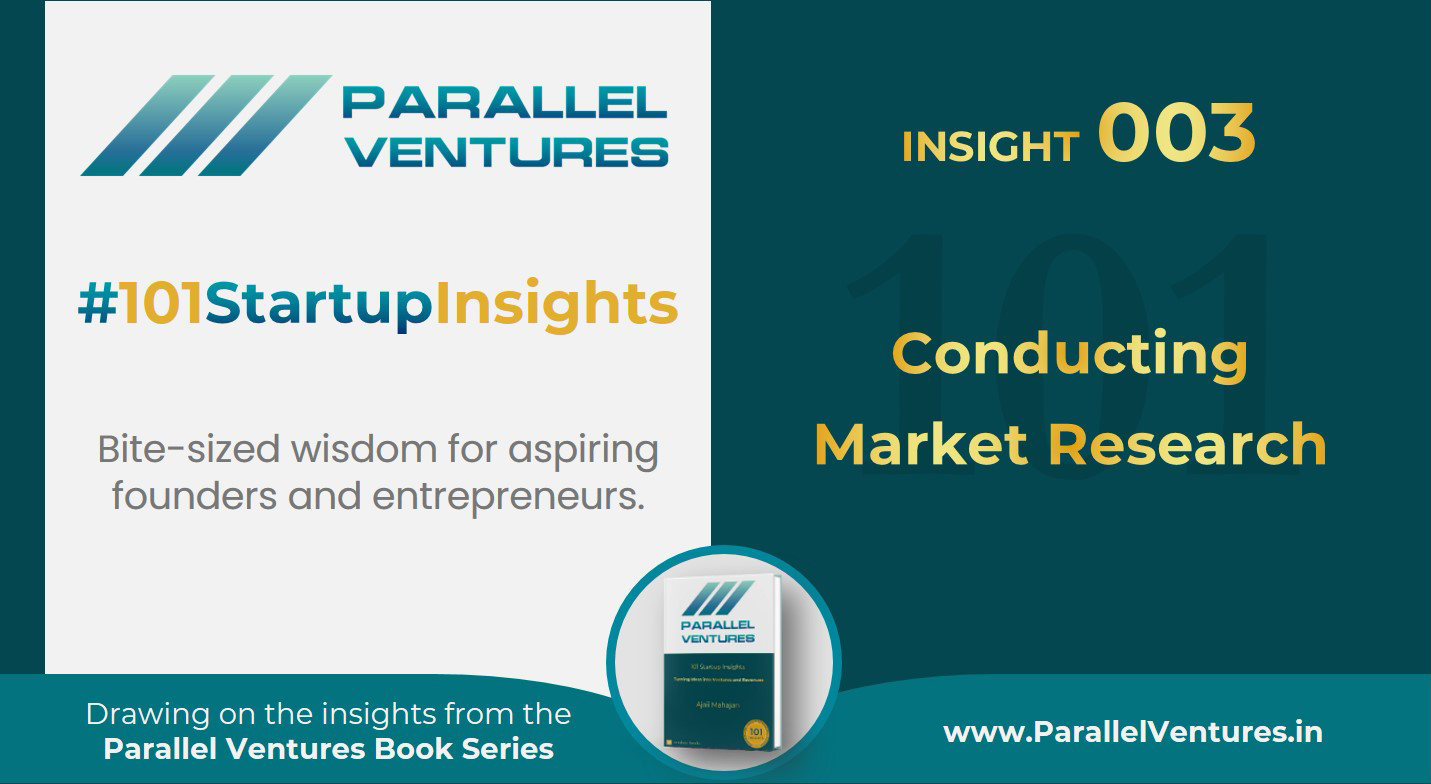
Many founders believe they already know what their customers want. After all, they’ve identified a problem, they’ve brainstormed a solution, and they’re excited to build it. But enthusiasm can be deceiving. The danger lies not in caring too little, but in assuming too much.
If there’s one thing I’ve seen time and again, it’s this: startups often fail not because of bad products, but because of misaligned ones—solutions built for customers who were never really understood.
This is why market research isn’t a formality. It’s a foundation.
Assumptions Are Easy—Insights Are Earned
At the early stage, it’s tempting to rely on intuition. You’ve spotted a need. You think you know the customer. You’re eager to build. But assumptions—no matter how educated—are not evidence.
Real insight comes from effort: listening, observing, analysing, and being open to finding that what you assumed may not hold true in the real world.
Market research is how you move from gut feel to ground truth.
Priya and Rohan: From Passion to Precision
Priya Sharma had a strong mission: to make sustainable fashion accessible. But as she began sketching out her offerings, she realised she didn’t know who she was really designing for. She assumed people who cared about the environment would be happy to spend more. But assumptions like these can be misleading.
So, she turned to the market for answers.
Through customer interviews and targeted online surveys, she started to see clearer patterns. Her ideal customers were younger professionals—people who valued sustainability, yes—but who also cared about style, price, and convenience. If her clothing line missed the mark on any of these, sustainability alone wouldn’t be enough to drive sales.
This clarity reshaped her product vision and gave her the confidence to move forward with purpose.
Rohan Malhotra, meanwhile, had his sights set on logistics. He was sure inefficiencies existed—but didn’t yet know who was feeling the most pain, or how they were managing it today. So, he started with secondary research: reading industry white papers, scanning forums, and analysing competitor offerings.
That was just the beginning.
He then moved to primary research—conducting in-depth conversations with small business owners to hear firsthand how they navigated supply chain issues. That’s when he struck gold: a niche segment of local retailers who were struggling with last-mile delivery. They weren’t being served well by the big players, and Rohan saw an opportunity to fill the gap.
This layered research process—macro view followed by micro conversations—helped him shape a product with real demand behind it.
What Market Research Actually Does for You
Let’s break down why this matters:
- It provides clarity. Instead of building in the dark, you gain directional insight. You learn who you’re serving, what they value, and where your idea fits in their world.
- It reduces risk. Every step you take based on real feedback reduces the chances of creating something that misses the mark.
- It reveals blind spots. What you think is your unique edge might already exist—or worse, might not matter to your users at all.
- It sharpens your messaging. Once you know your customer deeply, your communication improves—because you’re no longer guessing.
This is why market research isn’t a box to tick. It’s a compass.
Primary vs. Secondary Research: Use Both
Founders often ask: Which one should I do—primary or secondary research?
The answer is both. Each plays a distinct role:
- Secondary research helps you understand the landscape: trends, gaps, emerging patterns, market size, and competitor moves.
- Primary research helps you understand the person: their frustrations, workarounds, desires, and decision-making processes.
Together, they give you the full picture. Together, they give your product a fighting chance.
Competitor Research: Not to Copy, But to Position
Market research isn’t only about the customer—it’s also about your competitors. But not in the way most founders think.
You don’t study competitors to mimic them. You study them to differentiate.
- What are they missing?
- Where do they fall short?
- How are their customers responding?
If you look closely, their weaknesses may point directly to your opportunity.
Validating Demand Before You Build
Finally, don’t confuse interest with commitment. People may say they like your idea. But that doesn’t mean they’ll use it—or pay for it.
That’s where pre-sales, waitlists, pilot programs, or even “coming soon” landing pages become valuable tools. They let you test for real demand with minimal cost.
If people sign up, engage, or even pre-pay, you’ve got signal. If not, you’ve got room to improve—before sinking time and money into something no one’s waiting for.
This Insight Is Just the Beginning. In the Book, You’ll Explore…
- How Priya and Rohan structured their early research and made sense of conflicting inputs
- Simple tools for designing surveys, interviews, and observational studies
- How to use competitor analysis without falling into imitation
- The difference between exploratory and validating research—and when to use each
- Real techniques to gauge demand before you build a full product
Before You Go
The more you listen, the less you assume.
And the less you assume, the stronger your product will be.
Research doesn’t slow you down. It saves you from costly detours.
If you’re building something for others, start by learning from them.
See you at the next Insight
Warmly,
Ajaii Mahajan
Founder, Mentor, Author – Parallel Ventures
Related Links
🌱 Explore the Books – Parallel Ventures
